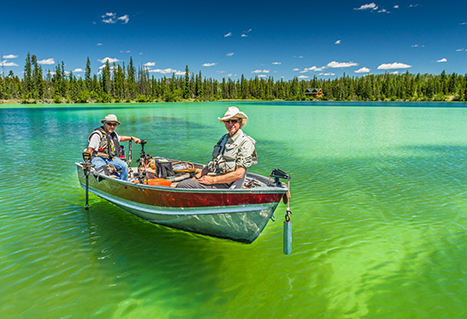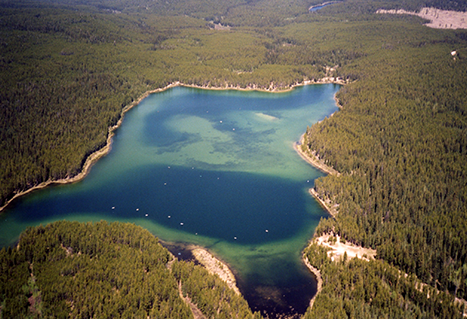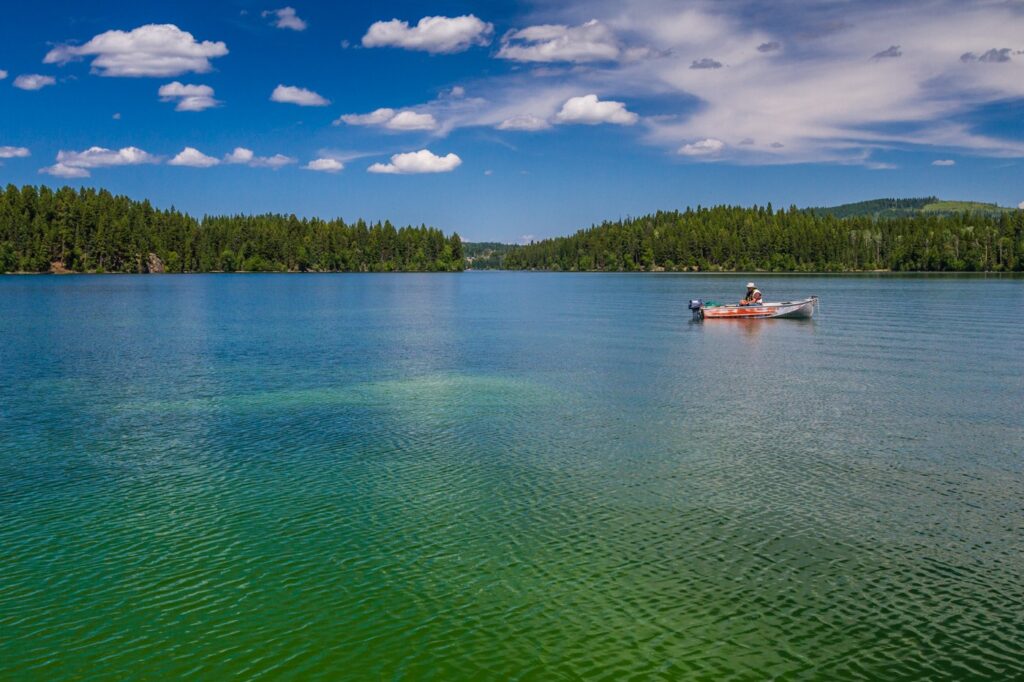Literally thousands of lakes throughout B.C. are ready to host your family’s camping and fishing vacation this summer. Many of the best fishing lakes are stocked on a regular basis by the Freshwater Fisheries Society of BC, and managed by provincial fisheries biologists to provide a diversity of fishing experiences. With so many choices, your decisions often come down to type of access, facilities in place, and the fishing offered at a particular waterbody.
Fishing during the summer can be a bit more challenging, as warmer water temperatures begin to dictate where in a lake its fish can reside. To assure a fresh-fish breakfast or dinner, anglers should be prepared to adjust their tactics.
Fish Behaviour During Summer
Our most productive trout lakes are found in the Interior, where long, hot summers are the norm. Rainbow trout and brook trout (char) are the most common fish species in these lakes. During summer, cold-blooded salmonids like trout and char have raised metabolisms, and their higher activity levels require adequate levels of oxygen to survive. Cooler water, found deeper in the water column, supports higher levels of oxygen as well as nearby food sources. As water temperatures warm, salmonids will seek this cooler water.
Trout Summertime Habitat
Prime summertime habitat for salmonids becomes the area where shallow water slopes off into the deeper parts of a lake, commonly referred to as the drop-off zone. In lakes with clear water, it is easy to see and follow the drop-off. In tannin-stained lakes, or those with heavy algal blooms, a depthsounder becomes your underwater eyes to find it. The bottom line: to concentrate your fishing efforts where the majority of fish will be living, you’ll have to know where the drop-off is.


Common Trout Food Sources During Summer
Common salmonid prey during the summer months include dragonfly nymphs, leeches, shrimp or scuds, and zooplankton. On some lakes, there will also be chironomid emergences that occur during the hottest periods of late-July and August.
Summer fishing tips
Prime depths to find feeding fish will be between 4.5 and 9 metres (15 and 30 feet), which often equates to fishing the deeper end of the sloping drop-off zone. Fish that show up on your depthsounder will often be sitting close to the bottom.
When fishing deeper edges of a drop-off and out into the mid-lake zone, full sinking lines in type 3 to type 7 become important tools. The number associated with a sinking line indicates the rate at which the line sinks. Thus, a type 3 line sinks at about three inches/sec, while a type 7 at seven inches/second. You want to make sure your fly is getting down to the depth where the fish are most concentrated.
Fly Pattern and Retrieval Techniques
Casting and retrieving dragonfly nymph and leech patterns up the face of a drop-off, or parallel to its slope, will present these flies to any cruising rainbow or brook trout. These same patterns can also be trolled using the same selection of sinking lines. Vary your trolling speed to allow the fly line to sink, and stay as close to the bottom as possible. Picking up the occasional bit of bottom debris or vegetation on your fly means you are in the right zone.
Always be on the lookout for chironomid hatches. Since summertime pupae and corresponding adults will often be quite large, they are fittingly referred to as bombers. Standard chironomid pupal patterns tied on #12 and #10 long-shanked nymph hooks are perfect for imitating these big fish treats.
And take advantage of being on the water to enjoy an early-morning sunrise or late-evening sunset. Cooler water temperatures at these times will often trigger feeding activity of the biggest trout in a lake – and fishing can be quite good.
Author: Brian Chan, Freshwater Fisheries Socity of BC Fishing Ambassador.
Banner image: Glenn Gerbrandt.
